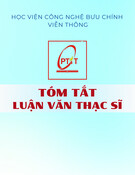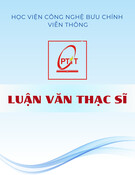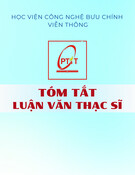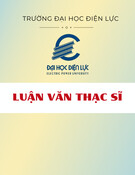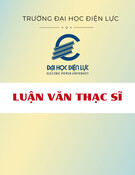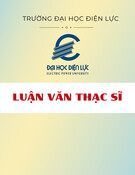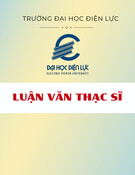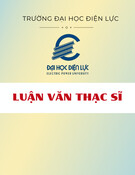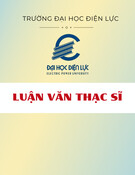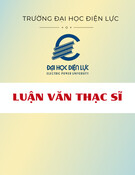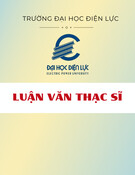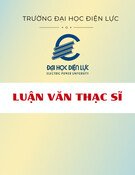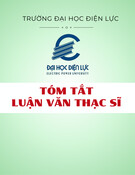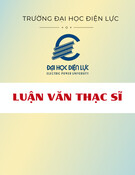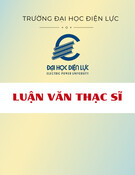
FAMILY BUSINESS CONTINUITY:
KEY FACTORS AND MAIN PRACTICES
A thesis submitted in fulfilment of the requirements for
the degree of Doctor of Philosophy
Lucio Edward Dana
B.A. LL.B. (Hons) (Monash University) G. Dip. Asian Law. (Melbourne University)
School of Management
College of Business
RMIT University
March 2019
© Copyright 2019 Lucio Edward Dana
All rights reserved

ii
Statement of Authorship
I certify that, except where due acknowledgement has been made, the work is that of the
author alone; the work has not been submitted previously, in whole or in part, to qualify for
any other academic award; the content of the thesis is the result of work that has been carried
out since the official commencement date of the approved research program; and any editorial
work, paid or unpaid, carried out by a third party is acknowledged; and ethics procedure and
guidelines have been followed.
Lucio Edward Dana
March 2019
Declaration Statement
I acknowledge the support I have received for my research through the provision of an
Australian Government Research Training Program scholarship
Lucio Edward Dana
March 2019

iii
Acknowledgements
I wish to express my sincere appreciation to all persons who inspired, counselled, and assisted
me during the course of this research program. Special thanks are due to:
My supervisor, Professor Kosmas Smyrnios, for his understanding, incredible patience,
constant encouragement, ongoing support, and personal guidance during my long candidature.
Neither the initiation, nor the completion, of this thesis would have been possible without his
inspiration, feedback, and direction … It took me a long time, but thanks to you Professor, I
finally got there, and I am very grateful!
My wife Prue, for her love, patience, and unwavering support over the eleven years of this
research project, as well as for her assistance with her diligent reviews first of the statistics
obtained from the National Family Business Survey undertaken in 2010 as part of this
research project, and second with the final versions of the draft thesis. My daughter Louise
for her valiant attempts to convert the older Word version of the draft thesis into a PDF
document to preserve formatting by using her more recent Word software on her computer.
Lin Xiong, Rui Bi, and Carmen Chu for their assistance with the structural equation
modelling work involved in this research program, and Xun Yang for her assistance with the
final formatting of the layout of the thesis.
Professor Booi Kam for his interest in this research program and his encouragement during
my candidature.
Sue Prestney and MGI for their support in the collection of survey data and publication of
survey findings.
Philippa Taylor (Former CEO of Family Business Australia 2005-2014) for her
encouragement and support of this research project.
The four family business owner-managers (who will remain anonymous) I interviewed for the
case study analysis in chapter 7, and the many diligent (and anonymous) family business
owner-managers who took time out to respond to the Survey questionnaires and to whom I am
very grateful for providing me with the information that enabled me to conduct this research
project.

iv
Family Business Continuity: Key Factors and Main Practices
Table of Contents
Page
Statement of Authorship and Declaration Statement ii
Acknowledgements iii
Table of Contents iv
List of Tables x
List of Figures xiii
Summary – Thesis Outline xiv
Publications, Conference Presentations, and Awards of the Candidate
Originating from the Present Thesis xviii
Chapter 1 - Introduction 1
Family Business Continuity: Key Factors and Main Practices 1
What do Family Business Have to Do to Survive and Thrive? 1
Theoretical and Practical Contributions Made by This Thesis 2
Family Business Continuity: Key Factors and Main Practices 3
What Do Families-in-business Have To Do To Ensure Continuity? 4
What Makes This Topic Worth Exploring? 4
- The determination of levels of awareness, acceptance, and
implementation of governance and management practices 4
- The exploration of the perceived gap between what is recommended by
the wider family business literature and what is actually done by
family business owner-managers 5
- The use of the expression best practice 6
Exit Options and Strategies of Family Business Owner-Managers 9
Main Constituencies Concerned with Family Business Practices 11
Thesis Main Research Questions (RQs) 13
Methodology to Address the Research Questions 15
Chapter 2 - Literature Review and Inferred Theoretical Underpinnings 17
Lessons Learned and Best Practice Approach to Family Business Continuity 17
Suggestions Made by Family Business Researchers 18
Main Sources of Family Business Governance and Management Practices 19
Four Main Exponents and Proponents of the Family Business Lessons
Learned and Best Practice Approach 20
John Ward (1997, 2004, 2009, 2011, 2014) 20
Joachim Schwass (2005) 27
Dennis Jaffe and Colleagues (1991, 2003, 2012, 2018) 28
Ernesto Poza (2007-2014) 30
Other Exponents and Proponents of the Family Business Lessons
Learned and Best Practice Approach to Family Business Continuity 32
James Chrisman and Colleagues (1998) 32
Ivan Lansberg (1999) 33
William O’Hara (2004) 33
Sharon Nelton (1991 & 2009) 34
Alden Lank (2003) 35
Grant Gordon and Nigel Nicholson (2008) 35
Steve Barimo and Colleagues (2014); Gen Spring (2014) 35

v
Barbara Spector (2014) 36
Practices Suggested by Other Researchers 36
Dennis Jaffe and Sam Lane (2004) 36
Kevin Groves (2017) 36
Denise Kenyon-Rouvinez (2017); Justin Craig and
Ken Moores (2007); Mohammed Oudah et al. (2018) 37
Practices identified by sponsors of family business Award Programs 37
Alternative perspective: Miller & Le Breton Miller 39
Conclusion 41
Inferred Theoretical Underpinnings of the Lessons Learned
and Best Practice Approach 58
Benchmarking, Total Quality Management, and Business
Excellence Movements 58
Theoretical Drivers of Family Business Best Practice 59
The Relatively Young and Unsophisticated Field of Family
Business Studies 61
Overview of Theoretical Underpinning of Lessons Learned and
Best Practice Approach
to Family Business Continuity 62
- Strategic Planning and Management Theory 62
- Systems Theory 63
- Agency Theory 64
- Resource-based View of the Firm 64
- Stewardship Perspective 65
- Stakeholder Theory 65
Family Business Best Practice Approach Based on an Eclectic
Theoretical Background 66
Discussion and Conclusion 67
Chapter 3 - Critiques of the Lessons Learned and Best Practice Approach 70
Preamble 70
Lessons Learned (or Best Practices) From Successful, Long-lasting Family Businesses 71
Part 1 - Critique of the Best Practice Approach to Business Performance 73
Conclusion 76
Part 2 - Critique of the Family Business Best Practice Approach 78
Overview 78
- Family businesses: unique and idiosyncratic 81
- Family businesses: non-conforming rule breakers 83
- Family business best practices: basically a variation on a theme of
conventional management practices? 85
- Equating (or conflating) family business success with succession 85
- Family-based versus business-based practices 88
- Challenges of shared ownership and leadership 90
- Family meetings and boards of directors 91
- Professionalizing the family business 93
- Are family business best practices tools or rules? 94
- Reliability of retrospectives and self-reports 95
When and How Do Family Business Lessons Learned Become Best Practices? 97
Best is a Problematic Notion 97
Greater Guidance Needed on How Best Practices Are Selected and Implemented 98
Discussion and Conclusion 100











